박물관은 한 나라의 역사와 문화가 살아 숨 쉬고 과거와 현재, 미래가 공존하는 특별한 공간이다. 그 나라의 문화의 힘을 확인할 수 있는 장소이기도 하다. 코리아넷이 대한민국의 지역별 국립박물관 6곳을 선정, 그곳에서 놓쳐선 안될 대표 소장품을 소개한다. 이번에는 경상남도 진주시 진주성 위치한 국립진주박물관을 방문했다. 국립진주박물관은 한국에서 유일한 임진왜란 특성화 박물관으로 임진왜란의 배경, 과정, 결과를 자세하게 살펴볼 수 있다.
A museum is where a country’s history and culture live and breathe and the past, present and future coexist, as well as showing the nation’s cultural power. Korea.net has selected six national museums by region to introduce leading must-see works displayed at each. The fifth installment of this series focuses on Jinju National Museum in Jinju, Gyeongsangnam-do Province, the nation’s only museum focused on the Imjin War, or Japan’s invasions of the Korean Peninsula in the late 16th century, that offers a detailed look at the background, process and results of the conflict.
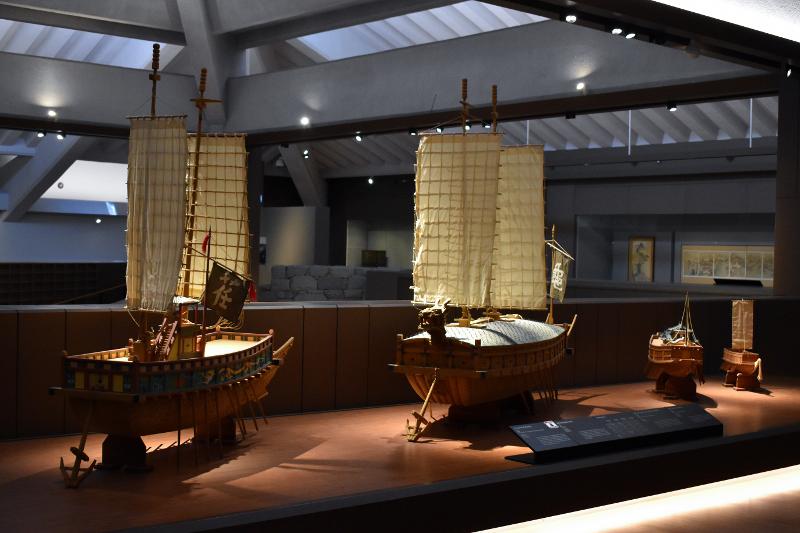
1. 조선의 대표 화약무기 ‘중완구’ – Joongwangu: Joseon Dynasty’s representative cannon
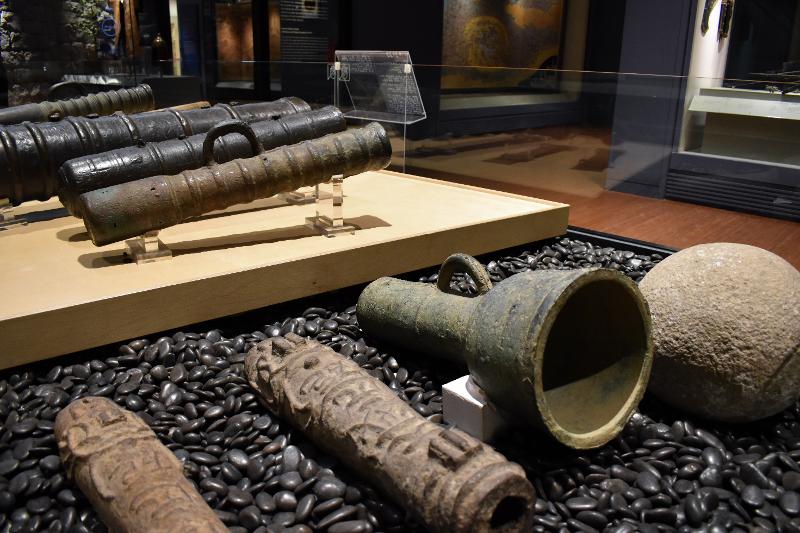
임진왜란은 1592년 일본의 조선(한국) 침공으로 시작돼 1598년까지 7년간 이어진 전쟁이다. 두 차례 침략 중 1597년의 제2차 침략을 정유재란이라고 따로 부르기도 한다. 임진왜란은 조선, 일본, 명(중국) 등 세 나라가 참전했고 각 나라의 사회, 경제, 문화 등에 많은 영향을 미쳤다. 임진왜란실에 들어가면 임진왜란 흔적을 볼 수 있다. 그 가운데서도 특히 눈에 띄는 것은 전쟁 무기류다.
The Imjin War was a series of late 16-century Japanese invasions of the Korean Peninsula from 1592-98. The second invasion from 1597-98 is also called Jeongyu War. The conflict involved the Joseon Dynasty, Japan and China’s Ming Dynasty and significantly impacted their societies, economies and cultures. Traces of the war are found at Imjin War Hall of Jinju National Museum in Jinju, Gyeongsangnam-do Province, with the weaponry used standing out.
당시 사용한 화포들을 진열한 전시실. ‘중완구’가 눈길을 끈다. 조선 전기부터 후기까지 성을 공격하거나 수비하는데 주로 이용했다. 국립진주박물관의 ‘중완구’는 경남 하동군 정개산성에서 출토됐단다.
The first eye-catching item at the hall is artillery used at the time, namely the joongwangu (mid-size cannon) that was primarily used to attack or defend castles from the early to late Joseon eras. The one displayed at the museum was found during excavations of Jeonggaesan Mountain Fortress in Hadong-gun County, Gyeongsangnam-do.
‘완구’는 조선시대에 만든 화포 중 하나다. ‘완구’는 크기에 따라 대·중·소·소소 네 종류로 구별된다. ‘중완구’는 일반적인 원통형 대포와 달리 총통 앞에 탄환을 장전하는 그릇 모양의 완(碗)이 달린 것이 특징이다. 유효사거리는 350보부터 500보(약 400~500m) 정도. 이곳 ‘중완구’엔 조선 1590년에 상주포에서 이물금이 주조했다는 명문이 새겨져 있다. 화포 제작에도 실명제를 도입한 셈이다.
A wangu is a type of cannon made during the Joseon era classified into four types based on size: large, medium, small and very small. Unlike typical cylindrical cannons, this weapon has a bowl-shaped chamber up front for loading a projectile with an effective range of 350-500 steps (400-500 m). Its inscription says it was made in 1590 by Lee Mul-geum at Sangjupo during the Joseon Dynasty, indicating a system of naming the maker in artillery production.
최유미 학예연구사는 “중완구가 조선 전기부터 후기까지 오랜 시간 사용되었으나 실물은 단 2점밖에 없다”며 “그중에서도 국립진주박물관 ‘중완구’ 제작 시기와 제작자를 알 수 있는 명문이 있어 더욱 중요하다”라고 했다.
“The joongwangu was used for a long time from the early to late Joseon period, but only two have survived,” the museum’s associate curator Choi Yumi said. “Among them, the cannon at Jinju National Museum is particularly important because its inscription shows the date of manufacture and maker’s name.”
2. 경남의 뛰어난 불교미술을 보여주는 국보 ‘산청 범학리 삼층석탑’ – Nat’l treasure showing province’s Buddhist art: Three-story Stone Pagoda in Beomhak-ri, Sancheong
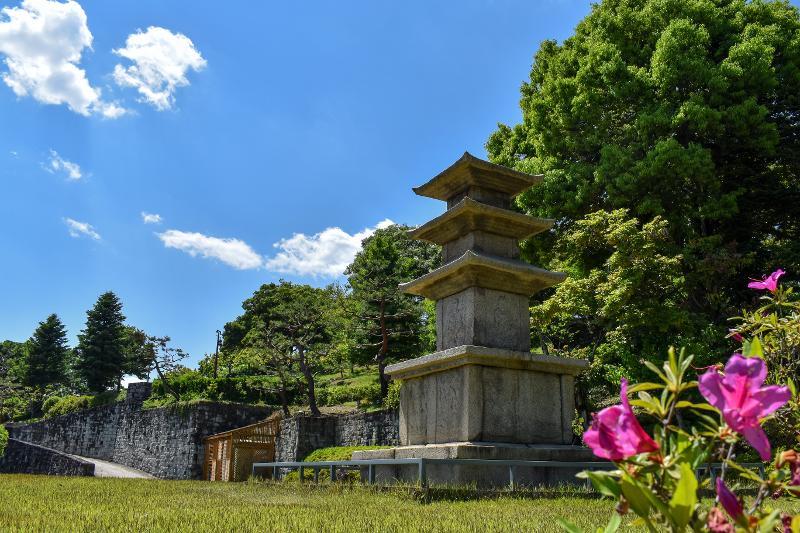
국립진주박물관 건물 옆 야외 전시장에 우뚝 솟아 있는 석탑이 한 눈에 들어온다. 멀리서 봐도 웅장하다. 4.42m 높이의 ‘산청 범학리 삼층석탑’이다. 추녀 끝의 치켜올려진 정도가 날카로워 경쾌하다. 경남 지역 불교미술의 우수성을 잘 보여준다는 인상이다.
A stone tower in the outdoor exhibition area next to the museum appears striking even from a distance. With a height of 4.42 m, the Three-story Stone Pagoda in Beomhak-ri (Village), Sancheong (a county in Gyeongsangnam-do) has sharply raised corners on the edges of the eaves both lively and sharp, showcasing the excellence of Buddhist art in the province.
탑은 2단의 기단(基壇) 위에 3층의 탑신(塔身)을 올린 일반적인 모습이다. 전형적인 통일신라 양식이다. 아쉽게도 꼭대기 장식과 하층기단 덮개돌 아래는 남아 있지 않다. 한국에서는 유일하게 섬장암으로 제작했다.
The pagoda shows a typical structure with a three-story pagoda on top of a two-tier pedestal, a characteristic typical of Unified Silla style. Unfortunately, the decoration at the top and the stones covering the lower pedestal cover are missing. This relic is also the country’s lone one of its kind made from syenite.
탑은 기단과 탑신의 1층 몸돌에 8부신중과 보살상이 화려하게 조각됐다. ‘장식탑’으로도 불려지는 이유다. 장식적인 표현으로 장중하고 소박한 맛은 좀 떨어지는 편이다. 그럼에도 통일신라 후기 석탑의 특징을 잘 나타내주는 우수한 작품으로 평가 받는다.
This tower got its nickname “decorative pagoda” from its intricately carved eight guardians and bodhisattva statues on the pedestal and first-level body. While it lacks the grandeur and simplicity of expression found in more ornate designs, this relic is still considered an excellent representation of stone pagodas from the late Unified Silla era.
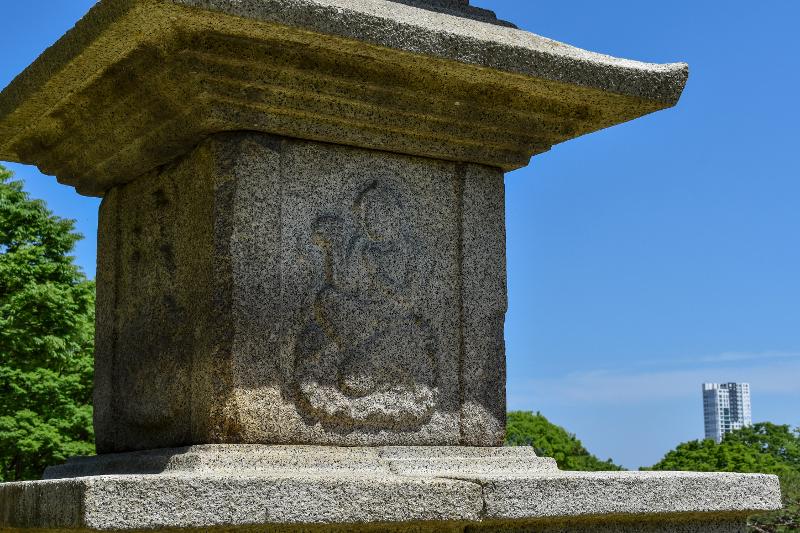
상층기단의 한 면에는 2개씩 총 8개의 신장상 부조가 새겨졌다. 신장상이 무력으로 불법을 수호하는 신이어서일까. 석탑에 조각된 신장상은 갑옷을 입고 무기를 든 모습이다.
Eight deity statues are carved into one side of the upper-tier pedestal, with two on each side. Perhaps these statues are guardians who protect Buddhism with their power, with those carved on the pagoda wearing armor and wielding weapons.
최유미 학예연구사는 “1층 탑신의 4면에는 공양하는 보살상이 각각 조각되어 있는데 정면의 보살상만 앞을 바라보고 있다”며 “신장상과 보살상의 조합은 독특한 사례로 9세기 통일신라 석탑 양식의 중요한 지표이며 당대의 뛰어난 조각 기술과 불교미술의 높은 수준을 보여준다”라고 설명했다.
“All four sides of the first level of the pagoda have carvings of bodhisattva statues making offerings, but just the one in front faces forward,” Choi said. “The combination of deity and bodhisattva statues is a unique example and important indicator of the stone pagoda style of ninth-century Unified Silla, showcasing the exceptional carving techniques and high-level Buddhist art of that era”
3. 죽은 이의 영혼을 운반하는 ‘도기바퀴장식뿔잔’ – Carrier of dead souls: Pottery Vessel with Chariot Wheels
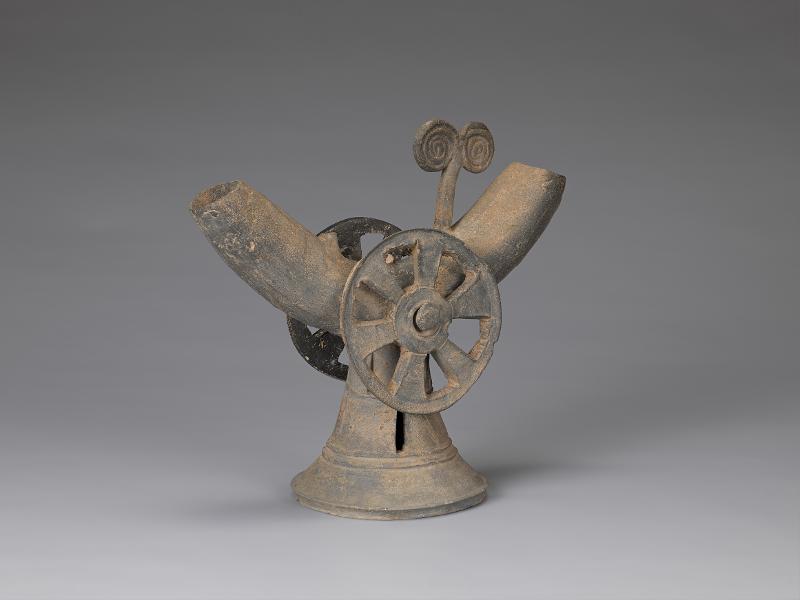
이 뿔잔은 5세기경 아라가야 지역(경남 함안군 일대)에서 제작됐다. 당시 신라와 가야에선 수레, 집, 동물, 신발 등을 본뜬 토기를 많이 만들었다. 이른바 상형토기다. 상형토기는 주로 무덤에서 출토된다. 이런 연유로 죽은 이와 관련된 사람들의 행위나 절차와 관련된 그릇으로 추정된다.
This horn-shaped vessel is from the fifth century in the Ara Gaya region in the vicinity of present-day Haman-gun County, Gyeongsangnam-do. Back then, both the Silla and Gaya kingdoms made patterned earthenware shaped like things including carts, houses, animals and shoes. The style used was known as petroglyphic pottery, whose items are mainly excavated from tombs. For this reason, the vessel is believed to be related to the actions or procedures of the deceased and associated individuals.
토기는 제의를 행할 때 술과 같은 음료를 돌려 마신 그릇이자 죽은 사람의 영혼을 사후세계로 운반하는 의미를 담았던 것으로 보인다. 다른 뿔잔 모양 토기와 달리 수레바퀴, 고사리 모양으로 장식한 형태가 특이하다. 가야인의 상장례를 엿볼 수 있어 중요한 유물이다.
The vessel appears to have used to drink beverages like alcohol during rituals and symbolizing the transportation of the dead’s soul to the afterlife. Unlike other horn-shaped vessels, its distinctive feature is its decorations shaped like cart wheels and ferns, and this makes it a key relic offering insight into the rituals of the Gaya people.
# 국립진주박물관 더 즐기기 – More ways to enjoy Jinju National Museum
국립진주박물관이 다양한 콘텐츠를 제작했다. 관람객이 전시된 유물뿐만 아니라 임진왜란을 더 쉽게 이해하도록 돕기 위해서다. Jinju National Museum produces content not only on displayed artifacts but also to help visitors better understand the Imjin War.
– ‘승자총통, 대첩의 불꽃이 되다’ 실감체험관은 외국인을 비롯한 모든 관람객이 현장이나 박물관 누리집(https://jinju.museum.go.kr/, 한국어, 영어, 중국어, 일본어)에서 예약 후 이용할 수 있다. 이 실감체험관은 한국 최초의 C타입 충전식 ‘승자총통’을 활용한 확장현실(XR) 콘텐츠 체험실이다. 체험자는 조선 총통수로 변신해 한산도 대첩과 진주대첩에 참전한다. 역사적인 사건에 직접 참여함으로써 자연스럽게 임진왜란을 깊이 이해할 수 있다.
The museum’s immersive experience hall presents “A Great Victory Sparked by the Seungja-Chongtong” in Korean, English, Chinese and Japanese for all visitors — Korean or foreign. Make reservations to see this on the museum’s website (https://jinju.museum.go.kr/eng/). The hall uses extended reality to offer the experience of Korea’s first C-type reloadable cannon Seungja-Chongtong. Visitors can also pretend to man the weapon and take part in the historical events Great Battle of Hansan and First Jinjuseong Battle of the Imjin War to gain a deeper understanding of the conflict.
– 국립진주박물관 공식 유튜브 채널 통해 ‘화력조선 연재영상’ (https://www.youtube.com/playlist?list=PL1qQ3tmkDHhQM1I5QdKobPWG1aV0i6HeJ) 등과 같은 임진왜란 온라인 콘텐츠를 확인할 수 있다. 국립진주박물관은 ‘화력조선 연재영상’의 영어, 중국어 등 외국어 자막을 제작 중이며 앞으로도 외국인 시청자를 위해 계속해 영상을 만들어갈 예정이다.
Watch content on the Imjin War through videos like “Firepower Joseon Series” on the museum’s official YouTube channel (https://www.youtube.com/playlist?list=PL1qQ3tmkDHhQM1I5QdKobPWG1aV0i6HeJ) with subtitles in English, Chinese and other languages. More for foreign visitors are planned.
진주 = 테레시아 마가렛, 최진우 기자 margareth@korea.kr
By Margareth Theresia and Choi Jin-woo, margareth@korea.kr
